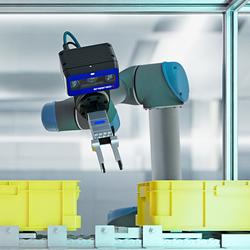Smart Factories Need Smart Machines
Five Business Tips for Robot Integrators
Distributed Control Systems Simplify the Three C's of Robotics
Robotics in the Folding Carton Industry: The Human Factor
Global Expert Platform for Production Services in Additive Manufacturing
Factory Automation Will Speed Forward with A.I., Says Bernstein
Most Popular Articles for 2015 - Did some of them predict the future?
Special Tradeshow Coverage for Advanced Manufacturing Conference & Expo 2016
Robotics 2016: Doubling Throughput in Distribution and Factory Operations
Time-of-Flight Camera - An Introduction
Building the Steam Controller
Getting Started with Collaborative Robots? Part 1 - What can collaborative robots do?
Father of Robotics Joseph F. Engelberger Dies at Age 90
On Cyber Monday, Friendly Robots Are Helping Smaller Stores Chase Amazon
Think You Know Industrial Robots? Think Again
Records 1081 to 1095 of 1238
First | Previous | Next | Last
Factory Automation - Featured Product

